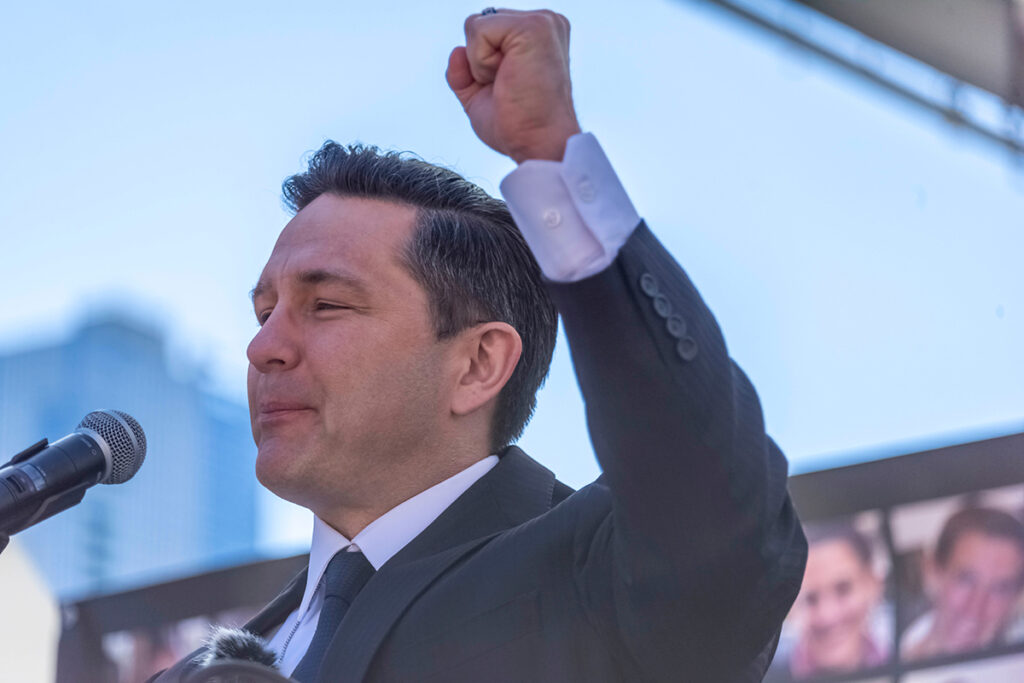As Canada’s political landscape evolves, Conservative leader Pierre Poilievre is navigating a delicate shift in strategy, prompted by a series of internal challenges, including the departure of Prime Minister Justin Trudeau, a looming U.S.-Canada tariff dispute, and changing voter sentiment. While the party maintains a decisive lead in national polls, internal divisions have emerged over how best to adapt Poilievre’s messaging to new realities.
Internal Divisions Over Messaging
In an effort to refine its approach, the Conservative Party has commissioned internal surveys to assess how to reposition its campaign focus. While some party strategists argue that the carbon tax is no longer the defining issue of the next election, others believe that abandoning it would undermine a core element of the party’s affordability message. Given the significant resources already invested in anti-carbon tax campaigns, some Conservatives are hesitant to shift focus. However, with Liberal leadership candidates now proposing modifications to the tax, the Conservative strategy faces a potential challenge in maintaining its dominance over the issue.
The party also faces a broader dilemma in adjusting its tone toward the Liberal government. While Poilievre has built his brand on harsh criticism of Trudeau’s policies, some within the party caution that in moments of national uncertainty—such as a potential trade conflict with the U.S.—excessive attacks could backfire with voters who prioritize stability.
Adjusting to the U.S. Tariff Threat
Poilievre has recalibrated his messaging to align with shifting voter concerns following the potential escalation of a U.S.-Canada tariff war. The leader has presented a new “Canada First” plan, echoing themes of economic nationalism that have gained traction internationally. His proposed response includes deploying additional troops and helicopters to the border, expanding the Canada Border Services Agency’s authority, and hiring 2,000 more border officers.
At the same time, Poilievre continues to place blame on the Liberal government for putting Canada in a vulnerable economic position. He argues that restrictive energy policies have made the country overly dependent on U.S. trade, strengthening Washington’s leverage in negotiations. Despite these strong criticisms, Poilievre has yet to commit to working with other parties on a broader economic plan or taking direct action to bring down the minority Liberal government.
Strategizing Against the Next Liberal Leader
With Trudeau’s departure, Conservatives are preparing for a different political opponent. Former Bank of Canada governor Mark Carney, a leading contender for the Liberal leadership, presents a new challenge for Poilievre’s campaign. While Trudeau became a deeply polarizing figure, Carney remains less well-known to the public, making direct attacks more difficult to execute effectively.
Some Conservatives believe that Carney’s background as a banker could create obstacles in his efforts to connect with working-class voters. Meanwhile, Chrystia Freeland, another potential leadership contender, is viewed as an easier target due to her direct association with the Trudeau government. The party has already begun tracking Carney’s public appearances, holding press briefings near locations where he is attending events to shape the narrative before his campaign gains momentum.
Conservative Polling Lead Narrows
Despite maintaining a strong national lead, recent polling suggests a modest shift in voter sentiment. Abacus Data reports that the Conservative advantage has declined from 26 to 21 points, while Léger shows the lead shrinking to 18 points. The CBC Poll Tracker also reflects incremental gains for the Liberals.
Conservative strategists remain confident that their position will hold, dismissing the recent uptick in Liberal support as temporary. However, some acknowledge that potential seat losses in Ontario and Atlantic Canada could slightly alter the expected margin of victory.
Looking Ahead
As the election approaches, Poilievre faces the challenge of balancing his signature aggressive rhetoric with a more adaptable campaign strategy. The party must decide whether to double down on established themes—such as the carbon tax—or pivot toward new voter priorities, including economic nationalism and border security. With internal divisions on messaging and a shifting political field, the coming months will test the Conservative leader’s ability to maintain momentum while navigating the unexpected.


